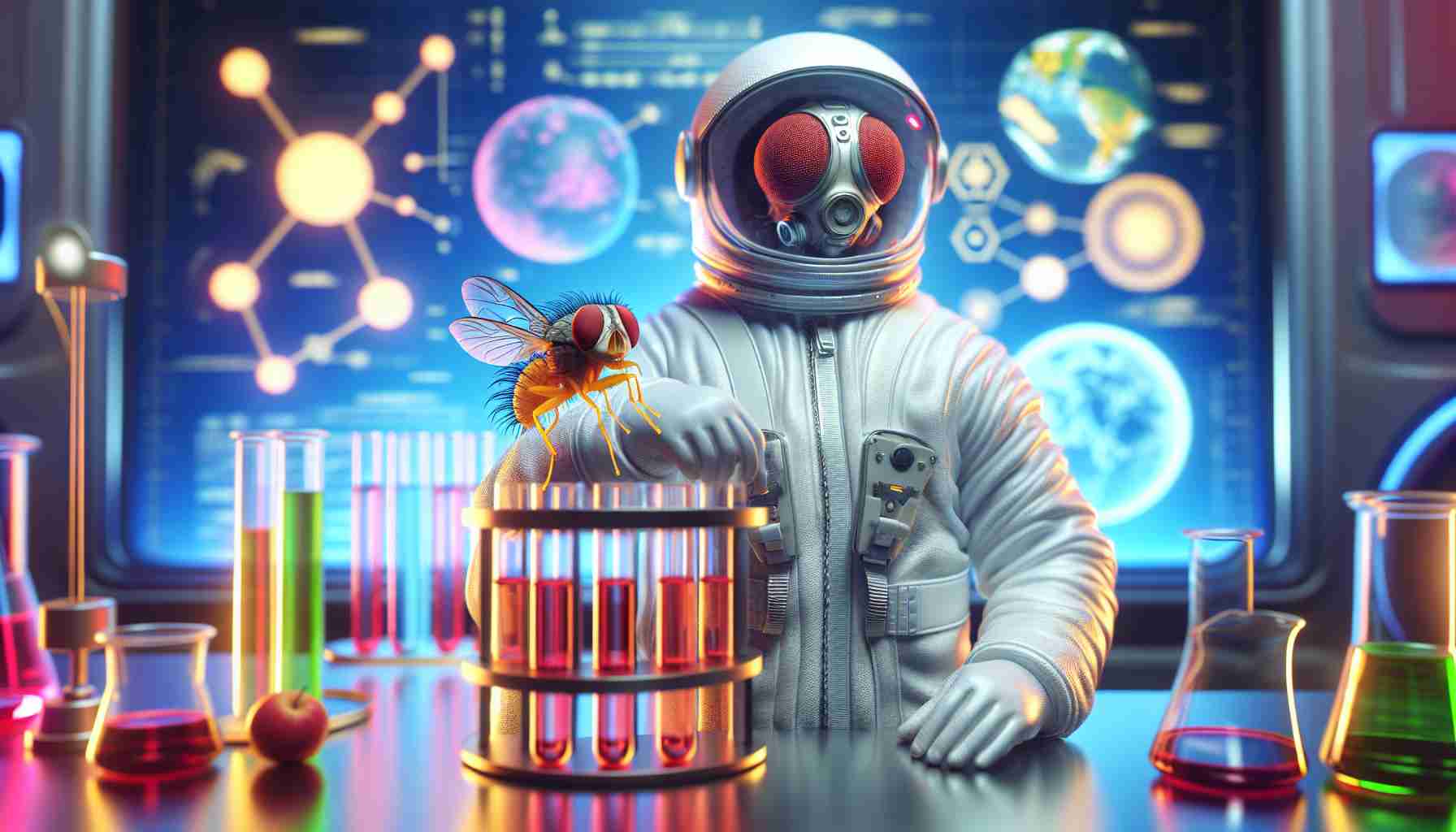- The Tata Institute of Fundamental Research is launching fruit flies on India’s Gaganyaan-1 mission to study the effects of microgravity.
- Fruit flies share 75% of genetic pathways related to human diseases, making them ideal for space research.
- The mission will last seven days, with real-time monitoring of the flies’ resiliency in space.
- The study focuses on the SIRT1 gene, linked to aging and stress resistance.
- Research aims to explore potential strategies for protecting astronauts’ health during space travel.
- Gaganyaan’s initial uncrewed tests will lead to future crewed missions, enhancing our understanding of biology in space.
Get ready for a pioneering flight as a team of scientists from the Tata Institute of Fundamental Research (TIFR) in Mumbai gears up to launch fruit flies aboard India’s first human space mission, Gaganyaan-1. Why fruit flies, you ask? These tiny creatures, or Drosophila melanogaster, share nearly 75% of the genetic pathways related to human diseases, making them perfect test subjects to unveil the mysteries of space travel.
As Gaganyaan-1 embarks on a seven-day journey into low-Earth orbit, researchers will closely monitor the flies in real-time to study their resiliency under microgravity. With lifespans ranging from 5 to 60 days, these remarkable insects are set for the mission’s length, providing invaluable data in just a short span.
The flies will be split into two groups: one will journey into space while the other remains as a control. The focus will be on the SIRT1 gene, closely linked to aging and stress resistance. Scientists aim to discover if enhancing SIRT1 levels can protect the flies—and potentially humans—during stressful space conditions, paving the way for innovative dietary or pharmaceutical solutions aimed at astronaut health.
As Gaganyaan prepares for its maiden flight next year—with bold plans for uncrewed tests leading to eventual crewed missions—the quest for knowledge about the biological effects of space travel is just beginning. Stay tuned, because this is just the start of a revolutionary exploration that could reshape our understanding of human health in space!
Groundbreaking Space Exploration: Fruit Flies Paving the Way for Human Health in Space!
Introduction
As India gears up for its inaugural human space mission, Gaganyaan-1, a remarkable experiment is set to unfold in the vacuum of low-Earth orbit. A pioneering team from the Tata Institute of Fundamental Research (TIFR) is preparing to launch Drosophila melanogaster, commonly known as fruit flies, aboard this historic mission. This innovative approach to space research carries implications not only for astronauts but also for human health on Earth.
Features of the Gaganyaan-1 Mission
1. Research Focus: The study centers on the SIRT1 gene, associated with aging and stress resistance.
2. Real-Time Monitoring: Scientists will observe the flies in microgravity to gauge their biological responses.
3. Control Groups: A control group will remain on Earth for comparative analysis.
4. Study Duration: The seven-day mission aligns perfectly with the lifespan of fruit flies, allowing for significant data collection.
Insights into Microgravity and Health
Research has shown that microgravity environments can induce various physiological changes that may lead to adverse health effects for astronauts. By employing fruit flies as model organisms, researchers aim to unravel the impacts of space travel on biological functions, informing future strategies for astronaut health through potential dietary or medicinal interventions.
Innovations in Space Research
– Genetic Similarities: With 75% of genetic pathways relating to human diseases mirrored in fruit flies, the research could yield insights applicable to human health, especially in space conditions.
– Stress Adaptation: Understanding how the SIRT1 gene can aid in stress resistance may open doors to new treatments for diseases influenced by aging and stress on Earth.
Pros and Cons of Using Fruit Flies in Space Research
Pros:
– Quick lifecycles allow rapid data collection.
– Genetic similarities provide highly relevant insights.
– Cost-effective model organisms for extensive studies.
Cons:
– Limited complexity compared to human physiology.
– Results may not fully translate to human responses in space.
Trending Topics in Space Exploration
The Gaganyaan mission is positioned within a broader context of burgeoning international space missions, enhancing collaboration and scientific exchange. Other notable innovations in space exploration include the use of microorganisms and plants to study regeneration and resilience under space conditions.
Answers to Important Questions
1. Why are fruit flies used for space research?
Fruit flies share a significant amount of genetic material related to human diseases, enabling researchers to extrapolate findings from these organisms to human health.
2. What is the significance of the SIRT1 gene in the Gaganyaan mission?
The SIRT1 gene is linked to aging and stress resistance, making it a critical target for understanding how to protect astronauts’ health during long-duration space missions.
3. How does the Gaganyaan mission contribute to future human space travel?
By studying the biological effects of space travel on fruit flies, researchers hope to develop strategies to maintain astronaut health, which is essential for missions to Mars and beyond.
Conclusion
The Gaganyaan-1 mission represents an exciting convergence of biology and space exploration, with fruit flies leading the charge towards understanding how we can better sustain human health in the harsh environments of space. This mission not only sets the stage for India’s place in the space race but also promises a wealth of knowledge that can advance medical science on Earth.
For more information on the Gaganyaan mission and its groundbreaking research, visit ISRO.












